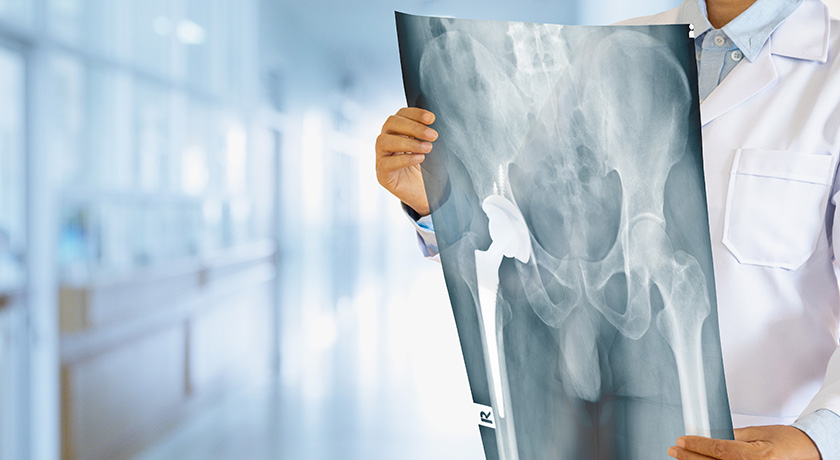
Thomas “Toney” Russell, M.D., an orthopaedic trauma surgeon and President and CEO of Innovision, developed the N-force fixation platform to meet his own clinical needs in optimal fixation of fractures in the extremities and pelvis.
Russell has worked with various device companies throughout his career, such as Richards Medical, Smith & Nephew, Knee Creations and Zimmer, making intramedullary nails, external fixators and plate systems. Despite this, the N-force system was a massive regulatory endeavor for a surgeon to undertake due to the system’s delivery of bone substitute material (calcium phosphate) through a metal screw.
After receiving multiple 510(k)s for the N-force, Innovision faced a new set of challenges: sales and marketing. The company addressed this by signing a distribution agreement with Zimmer Biomet in October 2015.
BONEZONE caught up with Russell to learn more about the N-force’s regulatory journey and his take on the future of implant delivery.
BONEZONE: What were your biggest challenges working with FDA? How did you overcome those?
Russell: We did a risk mitigation analysis, which took about two years to develop. Of all the risks, there were a few things FDA was concerned about. The first was implant strength. They challenged, ”You have to design implants that deliver these biomaterials to be equivalent in ASTM testing to the predicate devices on the market.” We worked on different ways to equal out the stresses, and developed a process to manufacture that reproducibly.
Then, we had to prove that the material would flow in the screws. We worked with a group at ETEX (acquired by Zimmer), and developed protocols to show that it was a low-pressure injection. All of the previous techniques involved high pressure to get materials in. With low pressure, we minimized the chance of embolism. We designed that characteristic in the screws through fluid dynamic analysis and thermodynamics.
FDA said, “You’re injecting materials that harden around the implant; they could turn into bone, how are you going to get the metal out?” So we designed a self-extraction feature in the hydraulic grooves that cut a path through the biomaterial once it hardens. If you have to take it out for some reason, you can do so without destroying the calcium phosphate around the bone.
BONEZONE: Why was FDA skeptical?
Russell: FDA thought this was impossible, since from a mechanical standpoint, once you insert holes or perforations in a cylindrical structure, it weakens the device. Also, bone substitute materials are non-Newtonian fluids that resist flow and movement down a closed cylinder, but we were able to engineer it. Once we received regulatory clearance, we performed a small release to several centers and collected experience with approximately 200 screw insertions. We learned more about the bone substitute materials and conducted more cadaver research, leading to another generation of bone substitute material and a mixing system to increase surgical efficiency, as well as a better sheath injection system for version 2.0 of the N-Force. We then went back to FDA and repeated the protocol testing to receive our next 510(k) clearance.
BONEZONE: In your opinion, what does the future hold for the orthopaedic industry?
Russell: For fractures, you reach the point where you can’t fix everything with metal if the bone quality is not good enough. Implants are designed to work best in normal bone, but we’re getting more patients with compromised bone due to osteoporosis and severe injuries.
In trauma implants, for years people said there is one size implant and this is what you need for all hip fractures, for example, no matter how small or big. In the last 30 years, my designs have focused on implant matching—so for younger, active people, I design the nails to be smaller; you take away less bone and still control stability to make them stronger. As you get to larger patients, you need designs that fit the bigger canals, so there’s a lot of engineering to avoid stress shielding and vary the cross-sectional modulus, which is the stiffness of the implant. Just like we do for total joints, you size the person’s anatomy and use the right sized implant that matches it. We haven’t been doing that in trauma until the last ten years or so, and there are still a lot of people who don’t do that.
For the last 30 years in orthopaedics, we’ve had a major innovation every ten years. When I started, 35 years ago, there was no arthroscopy, no spinal pedicle fixation or lateral interbody fusion, no interlocking intramedullary nails for the tibia or femur, no locking plates, no MIS, no bone substitute materials; the list goes on and on. For the next 30 years, we need to figure out how to marry implants with biologics to get a synergistic effect of the two.




